In today’s digital economy, some might consider issuing a press release to be an outdated approach. However, it continues to be a reliable and invaluable resource. And it's not just for big companies with extensive media contacts or sizable budgets, a small business press release can also be beneficial.
A good process can help ensure that your press release is a success. One step is to learn how to write an attention-grabbing and successful press release. A well-crafted press release can do wonders for small businesses. You could introduce your business to a bigger audience, get into the news, and generate positive media coverage.
The purpose of this article is to provide you with an overview of what a good press release is and its importance. Furthermore, we’ll present you with a guide on how to write an effective press release for a small business that produces results. In the end, you can write more effortlessly and have a deeper understanding of what needs to be done.
What is a press release
Also known as a news release, a press release is an official company document or statement. Press releases provide journalists and media outlets with all the information they need to cover a newsworthy story about a company.
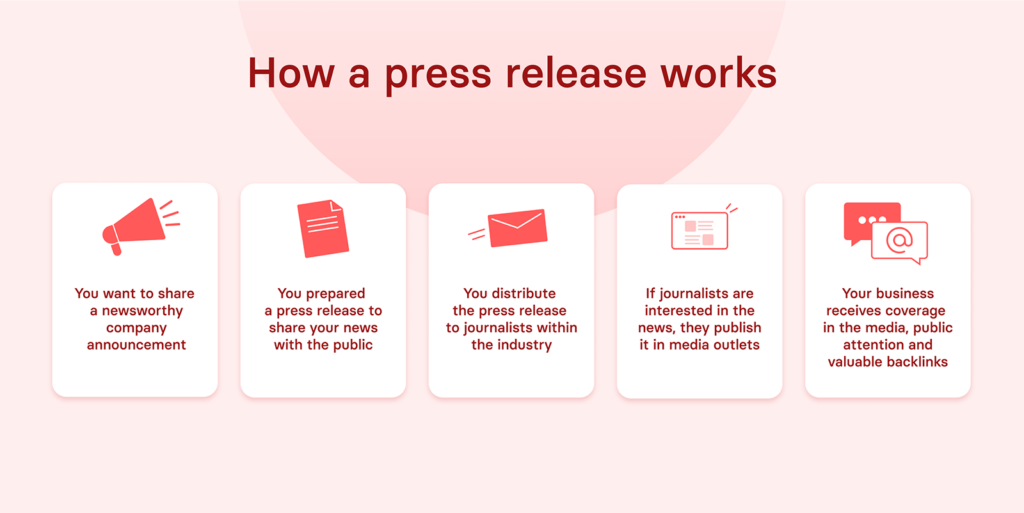
The average press release is just a page long — two at most. Instead of considering it a one-time task to generate news coverage, make it an integral part of your marketing strategy. When done right, it can be a powerful piece of content that’ll boost the reputation of your small business.
💡 Tip: If you're looking to amplify your PR efforts and connect with your community, consider if using local news coverage would be effective. For practical strategies, check out this article on how to get on local news.
Now it’s time to move on to the different types of press releases to help you curate the best for your business needs.
The 4 types of press releases for a small business you should know
There is no one-size-fits-all formula to guarantee the success of a press release. However, understanding the different types of press releases can take you one step closer to accomplishing the goal of growing your business.
Keeping this in mind can give you a clear sense of direction while writing your press release. There are many types of press releases depending on the purpose. For your convenience, we'll only discuss what small businesses may need most.
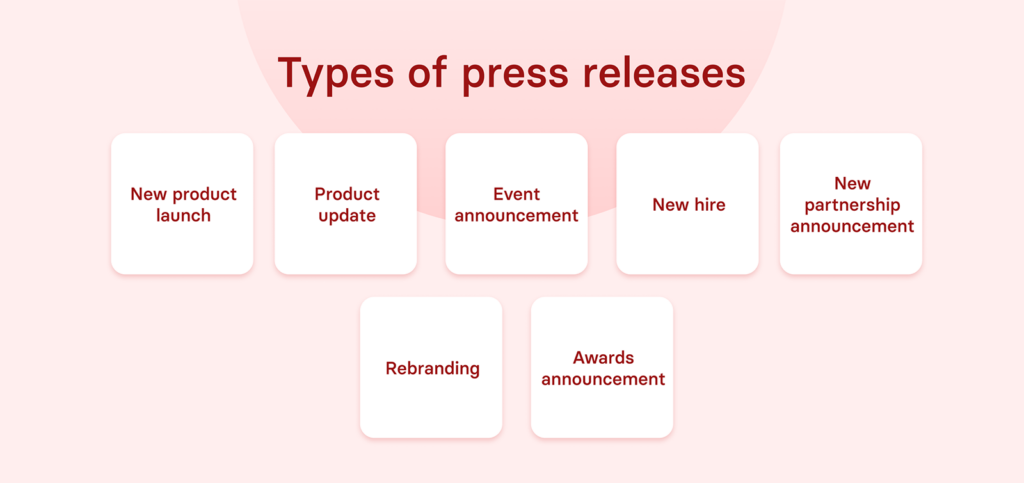
A. Business launch
This press release aims to promote a new business, initiative, or concept. It’s a great way to introduce your business to your target audience and pique their interest through pertinent company details.
Moreover, you should use this press release to showcase yourself and the team behind your business. It’s a great way to not only show appreciation to those working behind the scenes but it’ll also allow you to establish your credentials and expertise. Plus, you can personalize this to reflect your brand image or tone.
Rebranding is also an important change in your business that requires special messaging, including a press release.
B. Product launch
Product launches are some of the most popular press releases. These should be informational yet exciting in order to build buzz around a new product. It should highlight the product specifications, availability, pricing, and other relevant details to capture your target audience’s attention.
To demonstrate this, a great example is if you’re selling performance supplements. To introduce a specific sports supplement, you should incorporate its benefits, including how it can shorten recovery time and protect lean muscle mass. Additionally, you could put in that it has three flavors and comes in different sizes.
This allows existing and potential customers to be aware of your new product and get interested. For instance, they can start choosing a flavor or decide how much they want. You could also utilize this press release to inform them about a pre-order period. Hence, if they’re already hooked, they can start purchasing immediately.
C. Events
A successful event requires a press or media release to maximize awareness, gain media coverage, and inform the public. With this type of release, the details of the event you’re hosting or sponsoring must be included.
An event press release is best created with the inclusion of a bulleted form or a list of key points. Thus the “what”, “where”, and “when” are not buried in with other details in the middle of longer paragraphs. Plus, it makes the information more digestible for readers and makes the main details more memorable when shown in the news.
An event press release also includes achievement-intensive industries like sports training for international competition or educational training to get additional degrees. Take this MBA training service as an example. Their homepage would be much more attractive with a press release about the percentage of successes they’ve had from the students they’ve trained.
D. Partnership, mergers, or acquisitions
When your small business is involved in partnerships, mergers, or acquisitions, it’s best to write a press release announcing about it. It’s a fantastic way to gain local news story coverage as well as interest from a wider audience and potential investors.
As a press release example, let’s say you own a store. You could publicize that you’ve partnered up with Dress Forms to provide you with high-quality dress forms and mannequins. Be sure to include its respected reputation to establish credence in your announcement.
You should also, if permitted, name its high-profile clients including global fashion brands and Hollywood sets. Tell the readers that by partnering with them you’ll be able to improve your designs, thus offering your customers better products.
Want to make your press releases look better? Check out our latest article “How to Design a Press Release (w/ Tips & Examples)".
In the case of mergers and acquisitions, a change in organizational structure needs to be announced. Include relevant information, include why it happened, who benefits, and you can even use this as an opportunity to introduce new leaders. Although, you could make the latter a completely separate release.
Now that you know the different types of press releases, let’s discuss why it’s important to create a press release for a small business.
Why a small business needs to write a press release
If you're a small business owner, you already know writing a well-crafted press release is one of the easiest ways to get your company in front of new potential customers.
But how?
Press releases let you share information about your business with audiences interested in hearing it. That audience is primarily journalists, but it can also include customers, bloggers, and other influencers — anyone interested in what you have to say to write about or share it with their followers.
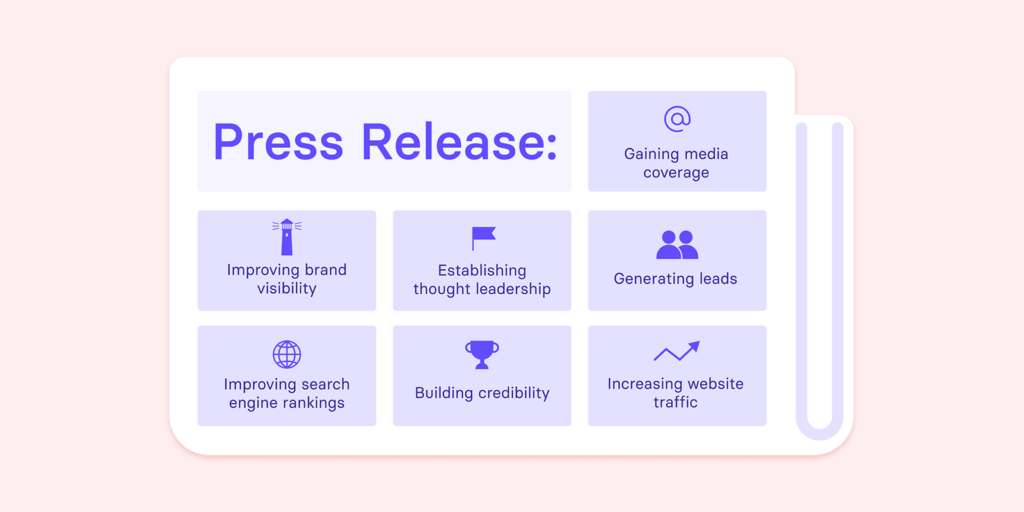
It lets everyone know what's going on, who you are, and what makes you unique. It’s a way for people to learn more about your company or just spread the word about what's happening in general.
In this guide, you can find information about press release distribution services and choose the one that meets your PR needs.
Here are the reasons why you should develop a press release now:
- It helps entice potential investors through positive media coverage
- During a crisis, a press release can soften the impact and help manage it effectively
- Keeping in touch with news outlets and journalists helps build meaningful relationships with them, which may benefit your business in the future
- Your brand will become more recognizable, attracting other companies to cooperate with you
- Encourage customer loyalty by aiding in community-building, sponsoring events for good causes, or even creating a connection with them by giving them product updates
How to write a press release for a small business in 8 steps
Given its potential impact on a company, press release writing can be intimidating. Why wouldn’t it be? One wrong word or the incorrect tone can make it almost pointless. Plus, it may even spark a backlash depending on what you write. Just look at some failed press release examples found online, including the image below with a long, puzzling headline can turn away their audience.
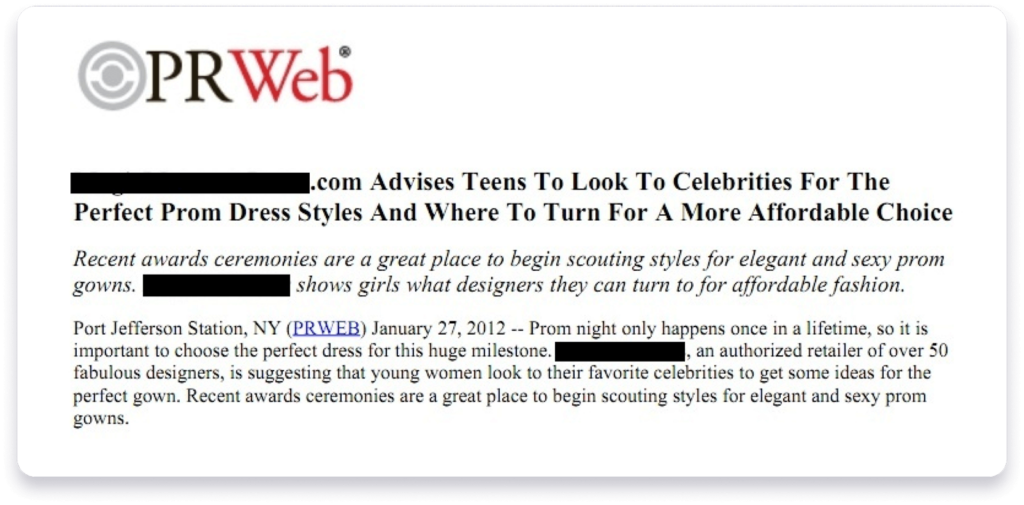
Some entrepreneurs have a knack for writing press releases while others don’t. If you’re in the latter category, don’t worry because you could always hire an expert virtual assistant to write one for you.
But if you have writing skills and just need a little assistance, this is for you. Following these steps can guide you in formulating the perfect press release for your small business.
1. Know the press release structure/format
Before writing a press release, it’s crucial to know the structure and create a great outline. Here are the basic elements of a press release:
- Company logo at the top
- Captivating title or headline
- Location (your headquarters) and dateline
- Introduction
- Body (up to three paragraphs of details)
- Bulleted facts (if you have any)
- Boilerplate
- Contact information
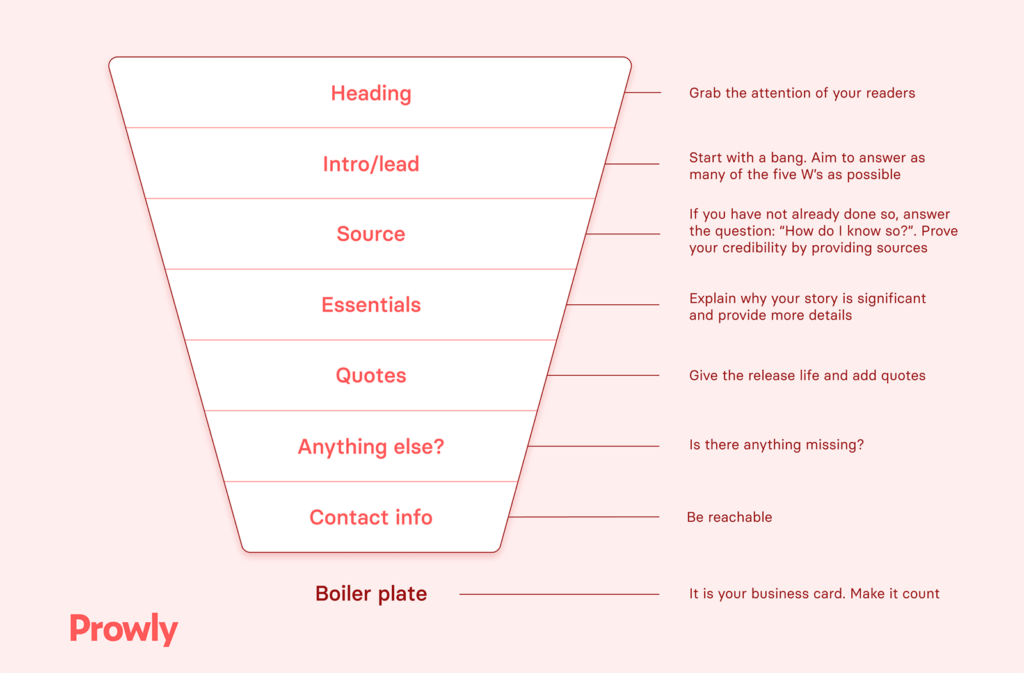
Now, if you look at some press release examples, you’ll see slight differences in formatting. For instance, some put their contact information before the boilerplate. You have a bit of leeway as long as all the crucial elements are included, resulting in a well-formatted press release.
To draw even more inspiration for creating an outstanding press release, check out our article with more than 20 press release examples.
2. Know your audience
To maximize the impact of your press release, you have to know your audience. Your angle or perspective should interest readers and reflect your distribution channels and platforms. Remember, press releases aren't only intended for existing customers but also for a broader audience.
For instance, the words, expressions, or tone you use may work for the consumers of local media outlets, but it may not sway an audience of a specialized magazine. For this reason, companies sometimes create different versions for different types of readers.
Moreover, you shouldn’t forget that you’re also writing for journalists. As such, research is crucial in targeting the right news outlets and journalists to publish your press releases. Otherwise, no matter how good your newsworthy press release is, in the hands of incompatible news outlets with an entirely different readership, it won’t be useful.
For example, if you’re introducing Shopify coupon codes as part of a product press release, you’ll need to find journalists and media outlets within the eCommerce niche. This makes it more likely to be picked up by journalists since it’s their area of expertise. Plus, it’s a piece that connects with their audience.
Prowly allows you to not only access a Media Database with over a million contacts, but also receive recommendations for relevant journalists based on the content of your press releases. This helps ensure that you are able to pitch your story to journalists who are most likely to be interested in it.
3. Create a captivating headline
Want to compel your audience to read through the press release? Start by writing an eye-catching headline.
This shouldn't just be catchy but should also reflect the purpose of the release and convey value from the get-go. It has to be attention-grabbing, but don't overdo it. You want the reader to know what the announcement is about without giving everything away. It should be just enough to entice them into reading further so they can learn more about your business.
Here are some following tips to get you started:
- Be specific
- Make it short
- Utilize action verbs
Take your time to create the right headline. Whether your press release will be read or pushed aside may depend on it.
4. Write a fascinating subtitle
To further capture your reader’s attention, a strong subtitle after the headline is needed. This is a one-sentence summary of the announcement. It should give your audience a taste of what’s to come and encourage them to read the whole press release without blatantly putting it in writing.
Although, if you look at press release examples, you’ll see that many companies forego this step. Nonetheless, if you get this right, it’s more ammo to compel the audience to read your release until the end.
5. Provide valuable information
Let’s be honest, many readers won’t take the time to read it all. Thus, your introduction or first paragraph should provide answers to the most important questions (where, what, when, who, and why).
For the second paragraph, you could include more information to establish credibility and support the details you’ve written in the prior paragraph. Depending on your topic, you could include statistics, research, and other sources.
For instance, remarkable book press releases provide readers with an enticing sneak peek of what awaits, steering clear of spoilers. On the other hand, sports journalists require press releases that include concise, "twittable" quotes and a collection of statements from athletes.
Say you’re announcing a partnership with an AI company to make business operations more seamless. You could include key statistics to highlight its importance and how it can boost your small business. For instance, you can put that “More than 80% of employees say AI improves their productivity” to support the idea that it’ll help your business as well.
It’s up to you whether you include it within a paragraph or create a bulleted list. As long as it’s clear and supports the purpose of the release.
6. Provide a quote
If you look at press release examples, you’ll notice that some include quotes. They provide a different perspective and act as an added value for readers. They can also help in shaping the narrative or granting clarity.
Even so, don’t just put random quotes. It’s best if the quote comes from someone of authority in your company. This can help lend credence since they’re directly involved with the project.
7. Add relevant background information
You shouldn’t put the key points in the last paragraph. Nevertheless, you still have to make it count.
You can offer additional relevant details to help emphasize your point and the overall narrative of the press release. For instance, if you’re announcing a merger, you could tell a short story about how it happened. On the other hand, if you’re offering a free but unfamiliar tool, you can briefly explain what the tool does and where it is used, like my favorite example from this free anagram tool has done.
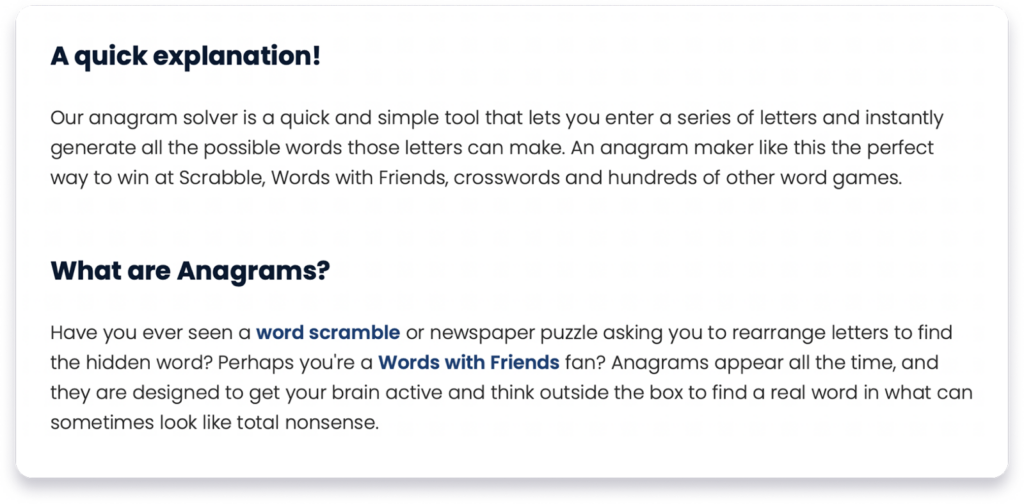
You can be creative with this and relate your press release to what’s currently trending. Just make sure it’s related and supports your narrative.
8. Create a strong boilerplate
At the end of the press release, you’ll want to add your boilerplate. This is a short paragraph that should include the following:
- A brief description of what you do
- Your industry (e.g., “we work in the manufacturing sector”)
- The name of your company, contact information, and website
- How long you've been in the business (and any awards or accolades you have received)
Overall, it serves as your company’s business card to readers. It will also help journalists remember your name and brand when they're writing their article to accompany your press release. Just remember, be wary of your word count because some news outlets or journalists may not publish it if it’s too long.
Press release distribution for small businesses can help increase brand awareness and drive traffic to their website. Read in this guide what the best time & day to send press releases is.
We also prepared two guides to walk you through using the AI Press Release Generator for the best results, as well as for writing and pitching press releases with AI.
Now that you know how to create a press release for a small business, we move on to a real-life business application.
Create a small business press release with AI
AI-powered tools for PR can help you create high-quality press release drafts, provide advanced editing suggestions, and even recommend who to send your press release to.
While it's worth knowing how to create an effective press release from scratch, using tools can help speed up the process and ensure you've ticked all the boxes regarding the format and content that journalists expect to receive.
Read more: Mastering AI Press Releases: Comprehensive Guide to Writing and Sending + Practical Examples
Here’s how to create (and send) a small business press release using a tool like Prowly’s AI-powered Press Release Generator.
Step 1: Enter basic details about your press release
- Start the process by entering the type of your press release.
- Once you select the type, Prowly's AI will ask you to pick your target audience. There are predefined options, such as industry players, customers, or local communities, but you can also add your own.
- Choose the language of your press release draft.
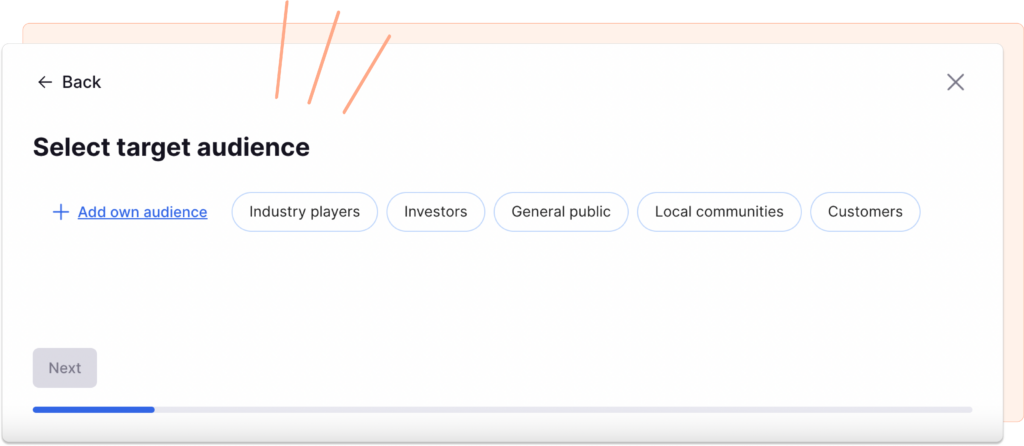
Step 2: Enter key messages of your small business press release
Here, you'll want to be as specific as possible and ensure that whatever you choose is the most relevant information about your small business announcement.
You can use the list of questions provided in the "How to write" section of this guide to help you get started.
Here are three examples of key messages that you can provide for your small business press release:
- Unique Selling Proposition (USP): Clearly articulate what makes your small business unique and how it solves a problem or meets a need in the market. This will differentiate your business from competitors and attract potential customers.
- Community Impact and Involvement: Highlight your business's commitment to the local community and any initiatives or partnerships you are involved in. This can help build positive relationships and goodwill.
- Growth and Success: Share your business's recent achievements, milestones, or plans for future growth. This will demonstrate your success and attract investors, partners, or customers.
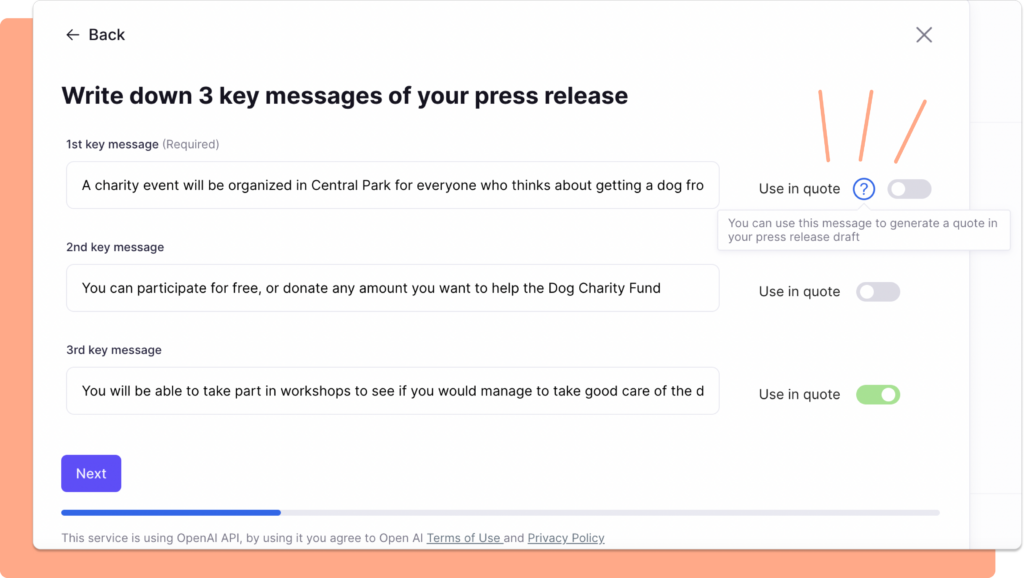
Step 3: Answer the follow-up questions
Once you’ve entered the basic information about your small business press release, Prowly’s AI will ask you more in-depth questions designed to mirror a natural conversation with the journalists you’re targeting.
You’ll receive ten questions tailored specifically to the content you shared earlier. This will complete your press release draft and reduce the need to answer many follow-up questions from the person you're pitching to.
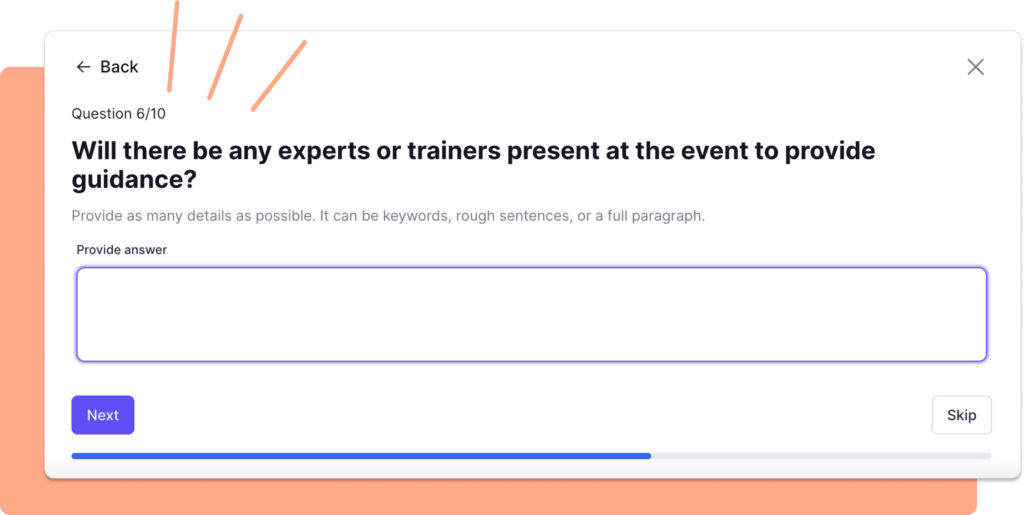
Step 4: Customize and edit the press release draft
Whether you've generated a press release draft or written it yourself, you can adjust header font styles, fine-tune the content just like you would in a regular text editor, adjust your press release length, and cater it into a format you're happy with.
An AI Assistant trained in PR writing best practices reviews the draft and suggests improvements based on 11 key criteria, indicating exactly where to edit.
Step 5: Get contact recommendations for your press release
Prowly’s AI will start suggesting journalists you can pitch to based on the keywords found in your press release.
As long as you have contact information for the people you want to pitch to, you can always do deeper work and find out what kind of small businesses they've covered before, or what they're currently writing about.
How to get it right: a press release example
You can scour the whole internet and see hundreds of press release examples. But since you’re already here, why don’t we give you one press release example that applies all the steps we’ve discussed?
To do this, we’ll give you snippets of a business launch press release from Apple. What better way to learn than from one of the biggest companies in the world, right? You could apply this even when writing press releases for a small business.
I. Headline
Why it works: As you can see, the headline is catchy and intriguing. In addition to showing the name of the business, it’s specific, short, and incorporates an action verb.
Also, it gives readers an idea of what it is about and what to expect from it by mentioning what it offers. Plus, phrasing it in this way and using a superlative helps build anticipation.
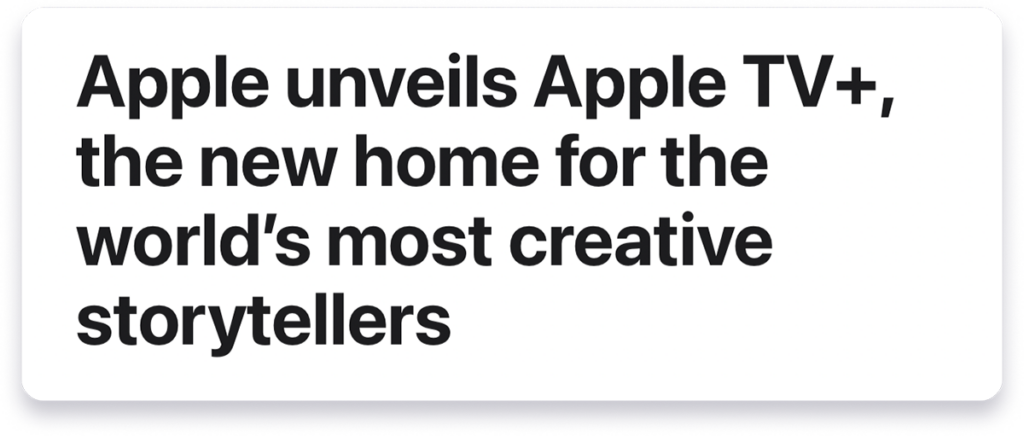
II. Subtitle
Why it works: With one sentence, Apple summarizes what the press release is all about and also mentions how it’ll benefit its users.
There’s no beating around the bush. The subtitle is clear and straight to the point but still maintains excitement for the audience.

III. Introduction
Why it works: In this introduction you can see that most of W’s have already been answered. It mentions the where (California), who (Apple), when (fall), and what (Apple TV+) of the new launch.
With this introduction, the audience gets to know the most important details. It also helps build the audience's anticipation by giving a snippet of what they can expect.
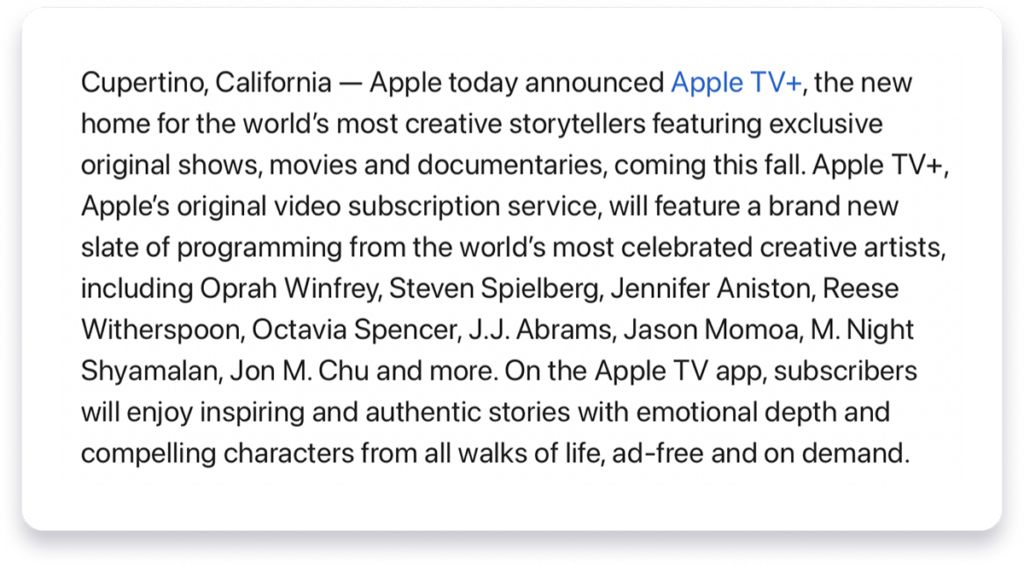
IV. Quote
Why it works: For the second paragraph, Apple utilized a quote from one of its executives. This helps build credibility since it’s someone with authority personally talking about the project and the announcement.
Additionally, it emphasizes the importance of what’s to come. It'll encourage readers to continue reading, especially since some of them may identify with the words “movie lovers”.
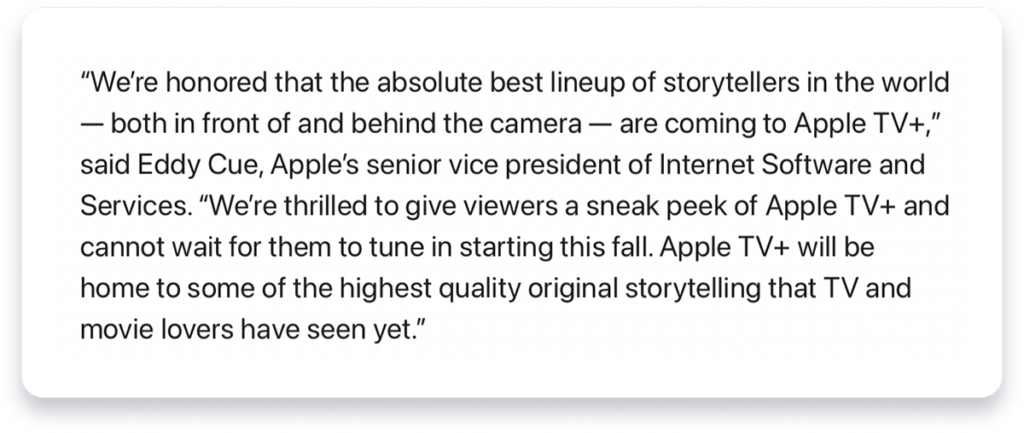
V. Body
Why it works: As you can see, the succeeding paragraphs are all about the relevant details. It talks about the current services and what customers can expect. As such, it builds up anticipation.
The other parts of the press release body are not posted here. But essentially, it provides more details and features of the new application. This press release format also has a bulleted list to provide clarity about the product’s availability.
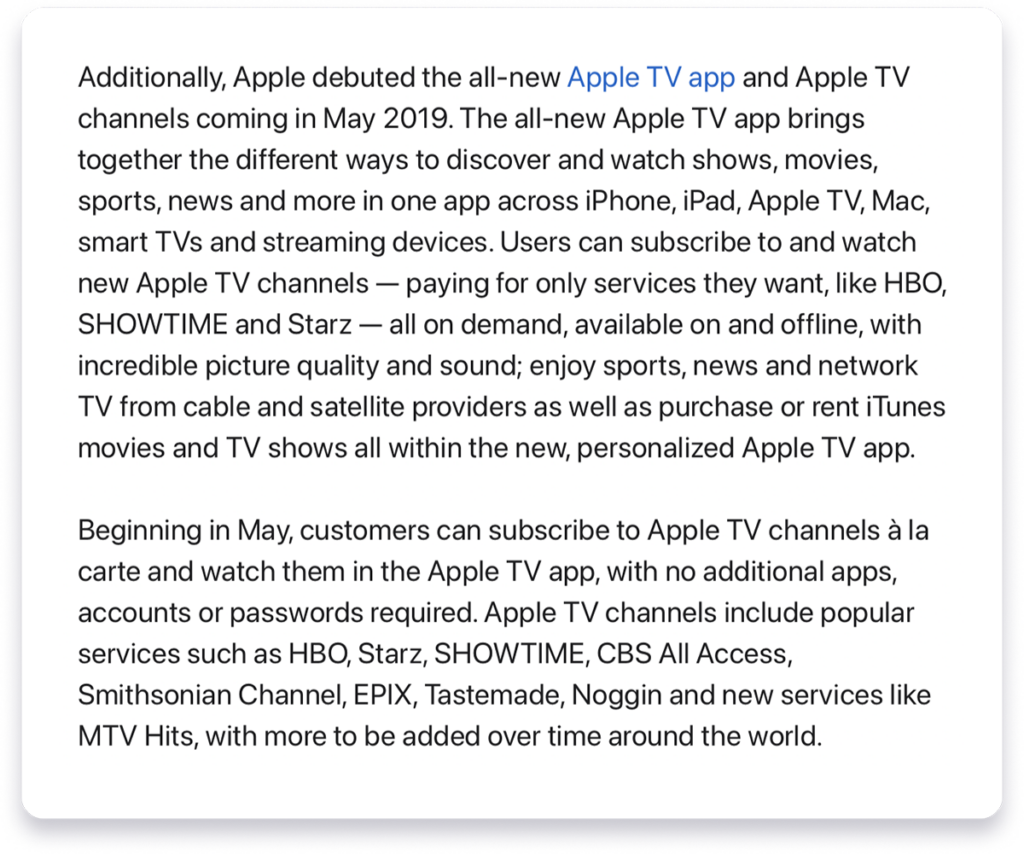
VI. Boilerplate and contact information
Why it works: What you can see in the image below is an excellent example of a boilerplate. An overview of the company's background, its main products, and the impact they have on its users are all included.
Furthermore, it highlights the employees and gives an insight into the company’s vision. Afterward, contact information is included for journalists or media outlets.

With that, it’s time to prepare your own press release, and we have something to help you start right away.
Wonder what’s the best time and day to send a press release? We analyzed more than 55000 press releases sent with Prowly, and found that Thursday is the best day! Read more in this article.
Small business press release template
If you search the internet for press release ideas for a small business, it’ll take you hours to find the best fit for your business needs. It’ll involve dozens of websites and hundreds of choices. Plus, with so many types, finding just the right small business press release examples can be confusing.
Fortunately, there is a list of free press release templates you can download and use right away. Plus, you don’t have to wonder what type each one is. The templates are categorized to make it uncomplicated to find the best press release template tailored to your company needs.
Conclusion
A press release is a way for a company to get its name out there. It's a chance to get its story heard by journalists as well as existing and potential customers, so it's important to write the best one possible. It can be frightening if you're not familiar with the process, but it doesn't have to be.
Can it be perfected? That depends on your writing skills.However, with perseverance, practice, and this guide, you’re on your way to writing the best press release your small business could ask for. Additionally, Prowly, the best press release service for a small business, can assist you with all your PR needs, including what to do after nailing your press release. Sign up and start your free trial today.

